Kinloch Castle: One of Scotland's most beautiful buildings for sale at £750,000 — but only to a buyer who's able to save it from ruin
Kinloch Castle — with its magnificent early 20th century rooms, wonderful views and extraordinary location of the island of Rum — is once again seeking a new buyer to rescue it from ruin.
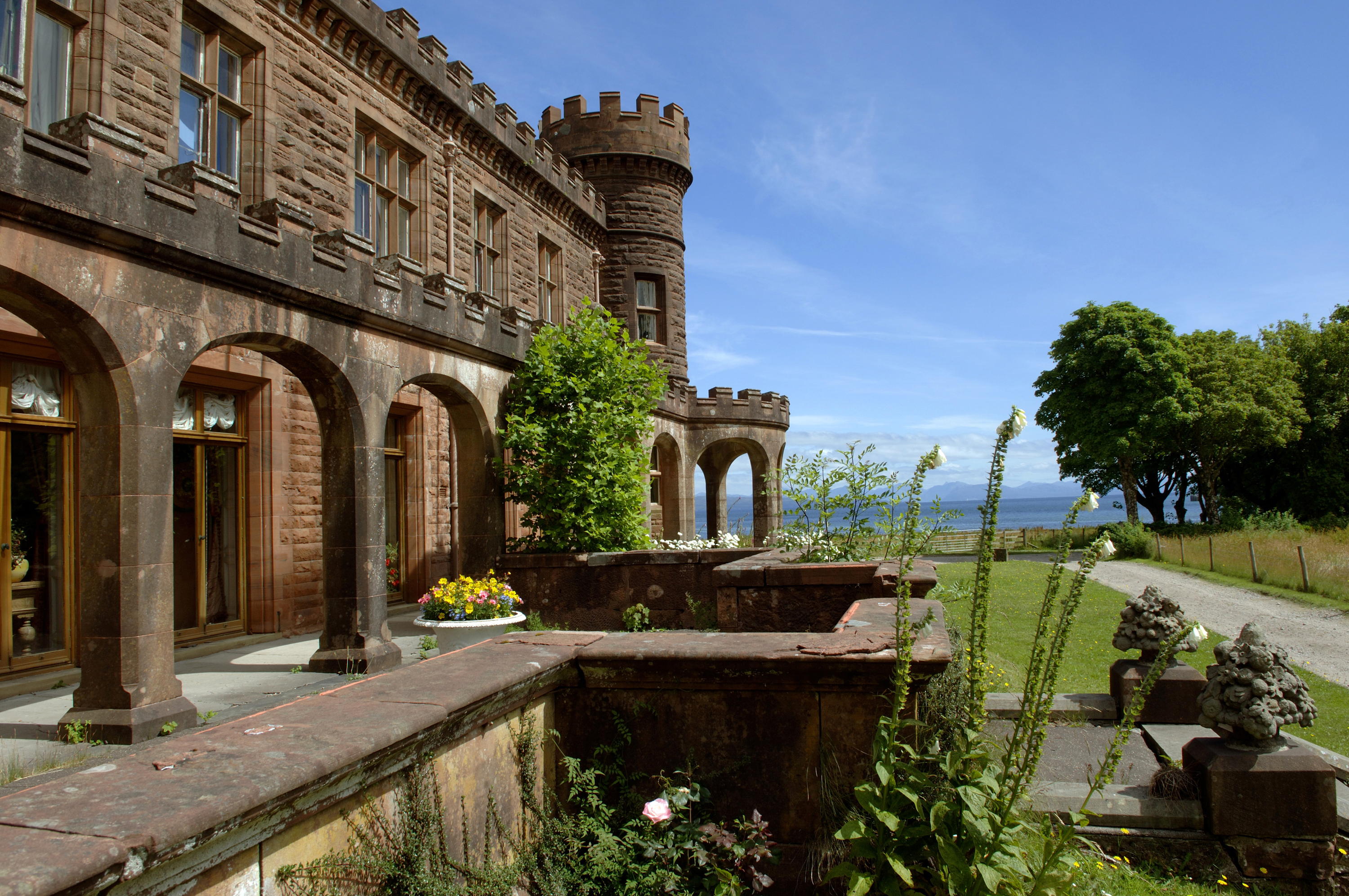

Annunciata Elwes
'Kinloch Castle, a crumbling-but-iconic landmark on the Isle of Rum with a nominal value of £1 — but the buyer will need very deep pockets...'
So ran the headline of Country Life's article four years ago on the latest twist of fate for Kinloch Castle, on the Isle of Rum, a spectacular place which John Betjeman called ‘an undisturbed example of pre-1914 opulence’.
At the time it had been put on the market by NatureScot, seeking a benevolent buyer who'd be keen to take on this wonderfully beautiful but rather troubled pile.
As of this week it's now back on the market this more, with a new asking price of £750,000. Savills are handling the sale.
So what has changed?
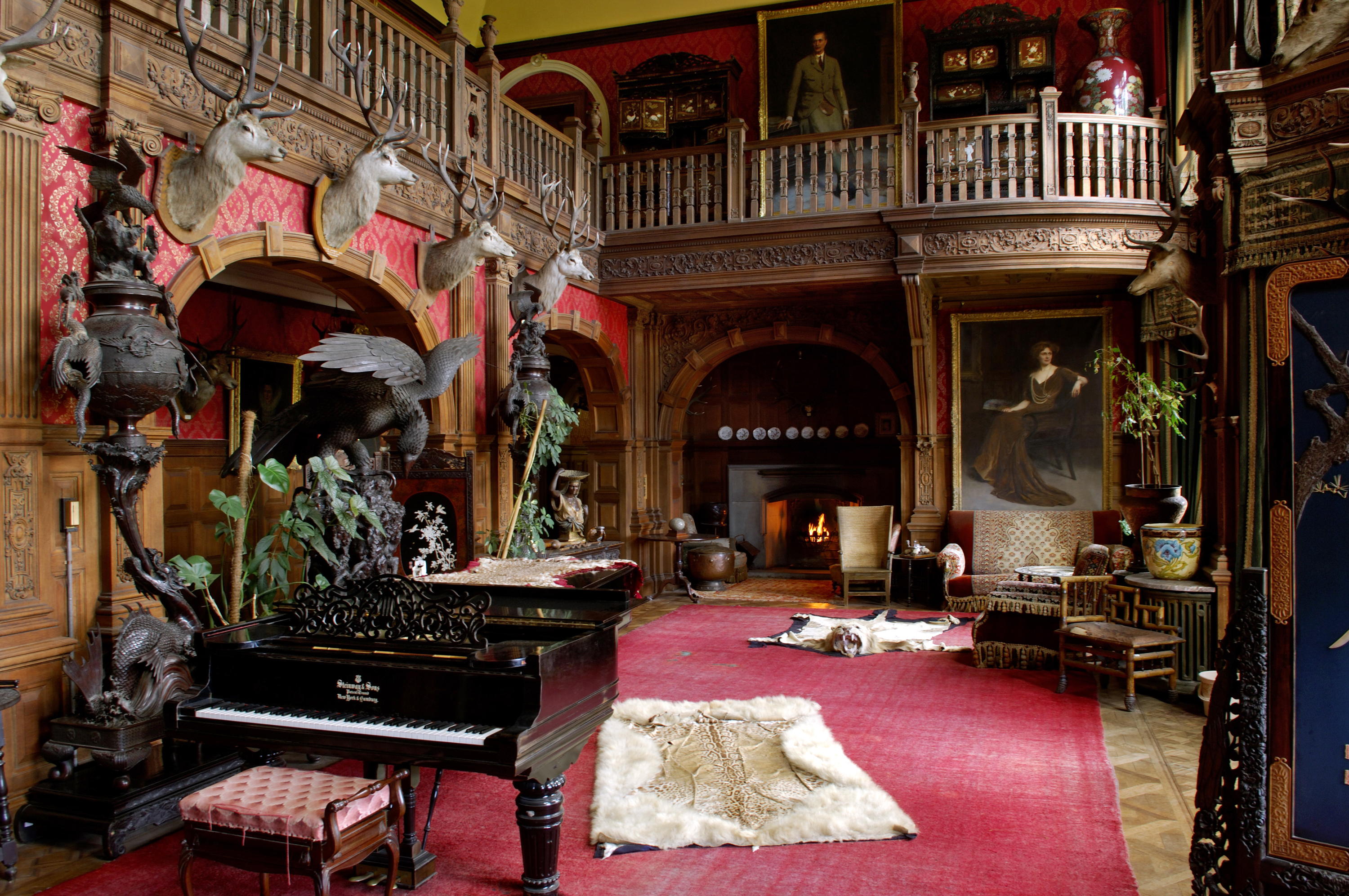
The interiors are still as they were over a century ago — albeit worse for wear.
Nothing in terms of Kinloch Castle itself, it must be said, which has now laid empty and decaying for years.
It was originally built by Lancastrian multimillionaire Sir George Bullough, who commissioned the turreted, red-sandstone house in 1897–1900 on the Inner Hebridean island, in order to host stalking, fishing, shooting and high-society decadence.
Exquisite houses, the beauty of Nature, and how to get the most from your life, straight to your inbox.
Rather wonderfully — and crucially for future plans — the rooms are almost entirely original, left as they were in its heyday, 'with a Steinway grand complete with scratches from dancing ladies’ heels, four-posters, a sprung-floor ballroom with gold-damask walls and even a vintage dental surgery,' as Country Life reported in 2021.
Intestine-like pipes of sophisticated Edwardian plumbing can be seen, together with decaying landscaped gardens with the remains of a palm house that was once full of hummingbirds, turtles and alligators.
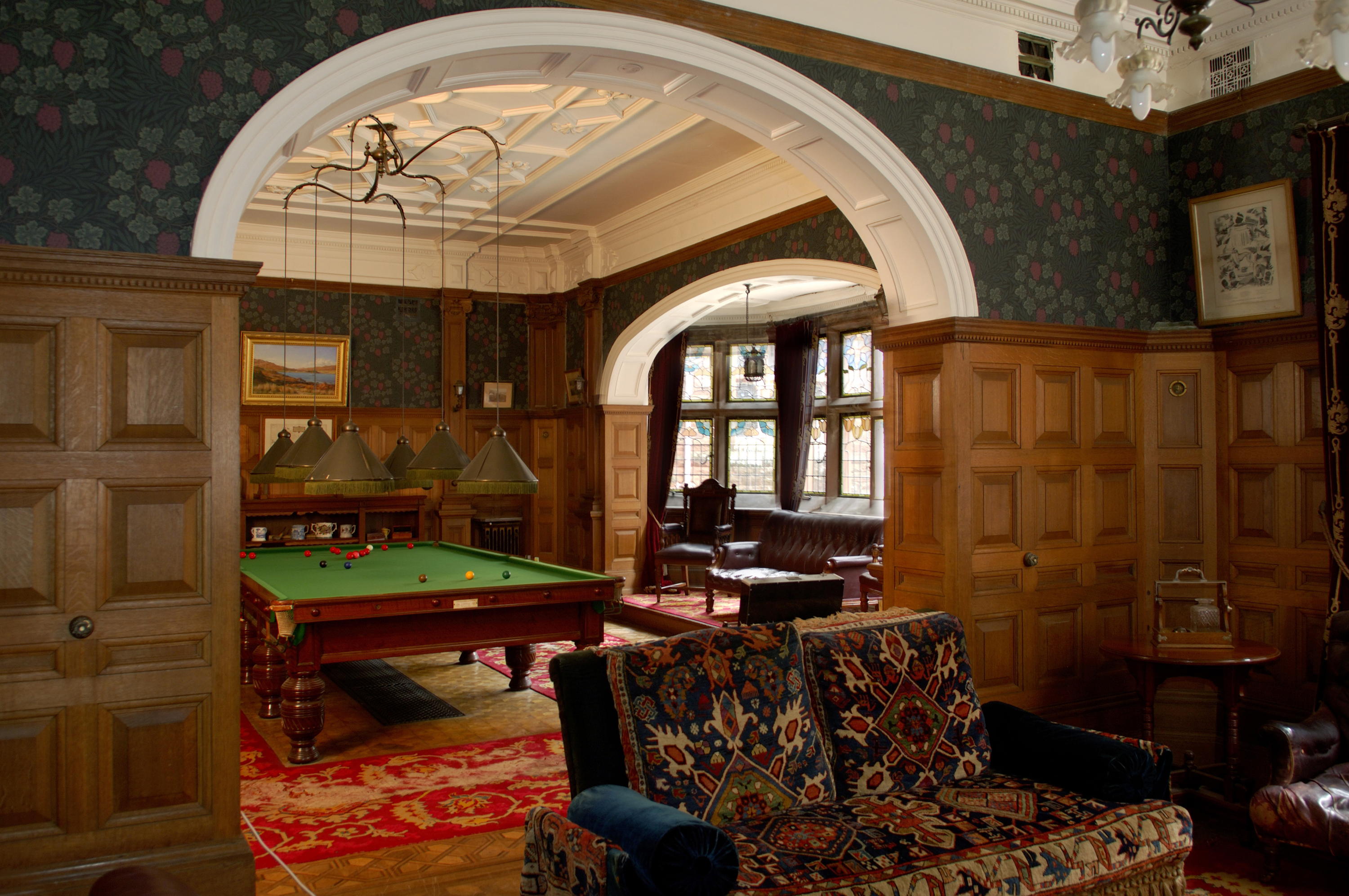
The house was a centre for Sir George Bullough's escapes.
One of the great curious is the world’s last functioning orchestrion, which remains in situ. It's a magnificent but complicated instrument that once belonged to Queen Victoria, and is capable of emulating a 40-piece orchestra. Yet it's in dire need of expert restoration, a job that would cost around £50,000 at the last estimate.

The orchestrion isn't so much a one-man-band as a one-machine orchestra.
That's just the start. A vast amount of other work must be done, as you can see from the pictures on this page, some of which were taken for Country Life in 2009, others of which are the latest supplied by the agent. In 2021 the estimated total cost of restoration was 'at least £20 million'; given how costs have risen so steeply in recent years, that might prove to be an underestimate.
So who will take it on?

Around 18 acres of land are included with the sale.
A buyer did step forward a few years ago — a city financier named Jeremy Hosking — but he pulled out of the sale, telling the BBC that his plans had been 'completely crushed'. The exact details of what happened and why are slightly hard to discern amid a string of claims and counter claims involving the politicians, local residents, NatureScot and Mr Hosking himself. So it's perhaps just as well a 'final report' was released by the Scottish government in May this year, laying out a list of conditions for the future sale and management of the castle.
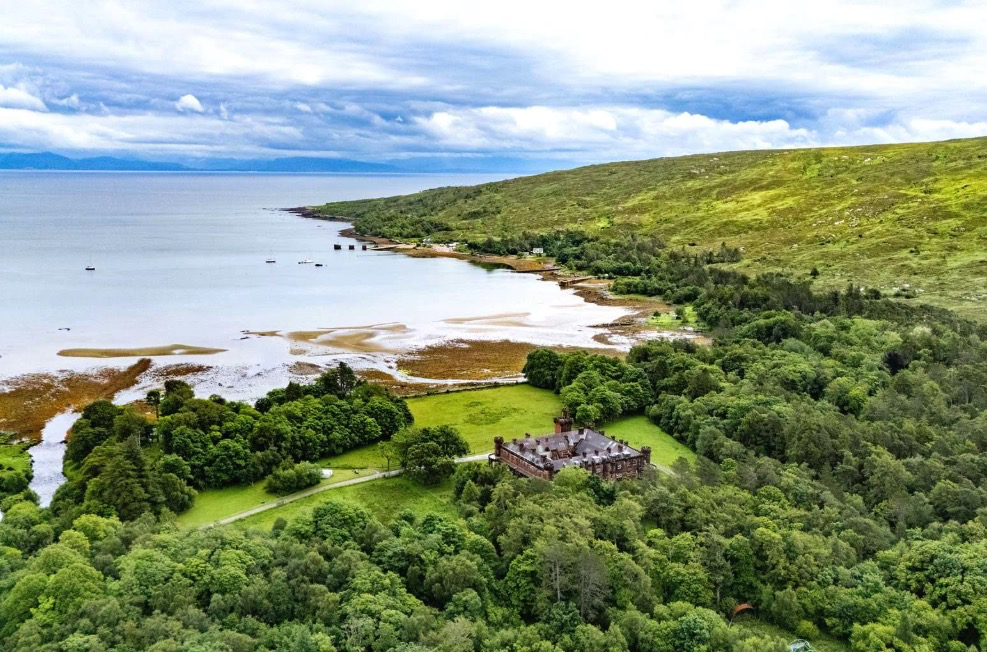
The castle's setting is truly wonderful.
Perhaps most important of all, the islanders have had their say — and this time around, most are convinced that a sale is the only true way forward. 'Many islanders feel that the sale, redevelopment and operational use of Kinloch Castle will have a positive impact on the Rum community,' the report reads.
It won't be plain sailing, however: some locals still strongly oppose sale and development: 'A small group of islanders is opposed to the sale,' the report adds. 'They would prefer to explore other options for the future of the castle, such as public ownership and use of the land and buildings or managed decline' — the latter meaning a steady decay into ruin.
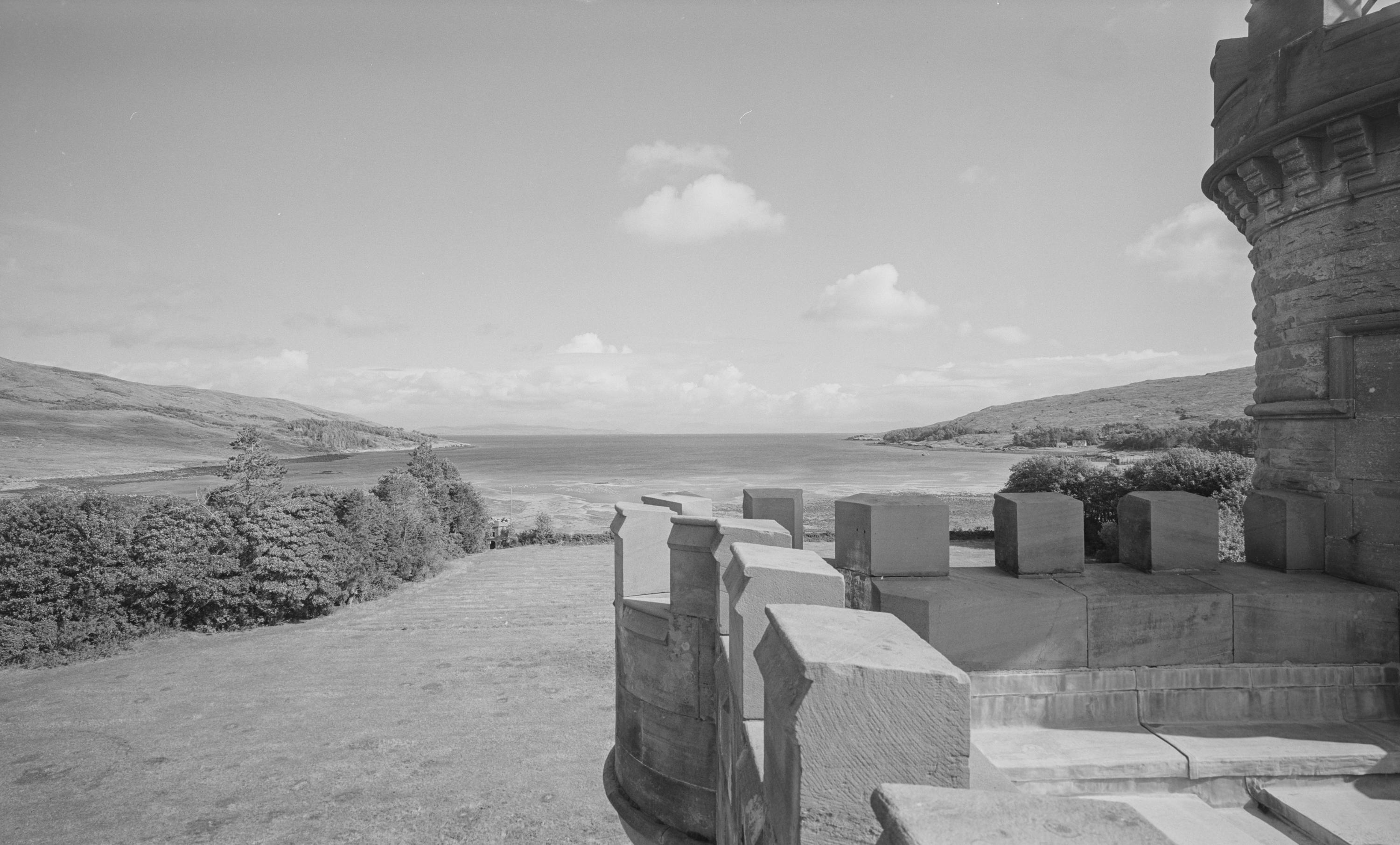
Kinloch Castle's view, as pictured in Country Life in its heyday.
Kinloch, set in seven acres, remained open as a museum until 2020 and its servants’ quarters were a hostel until 2013. Numerous fundraising efforts have hoped to tackle the leaks, dry rot and woodworm — including one by The Prince of Wales’s Regeneration Trust — but they failed to amass enough for restoration.
A previous report rejected an application from the Kinloch Castle Friends Association to take the castle, citing funding problems and and worries over the proposed business plan for turning the castle into a tourist destination. At the time that report listed the castle's value at a 'nominal figure of £1', but the new owner will have to prove that they have the resources to save this Category A landmark. The 2025 price of £750,000 is no doubt intended to make all the more certain that a buyer of suitable means is found.
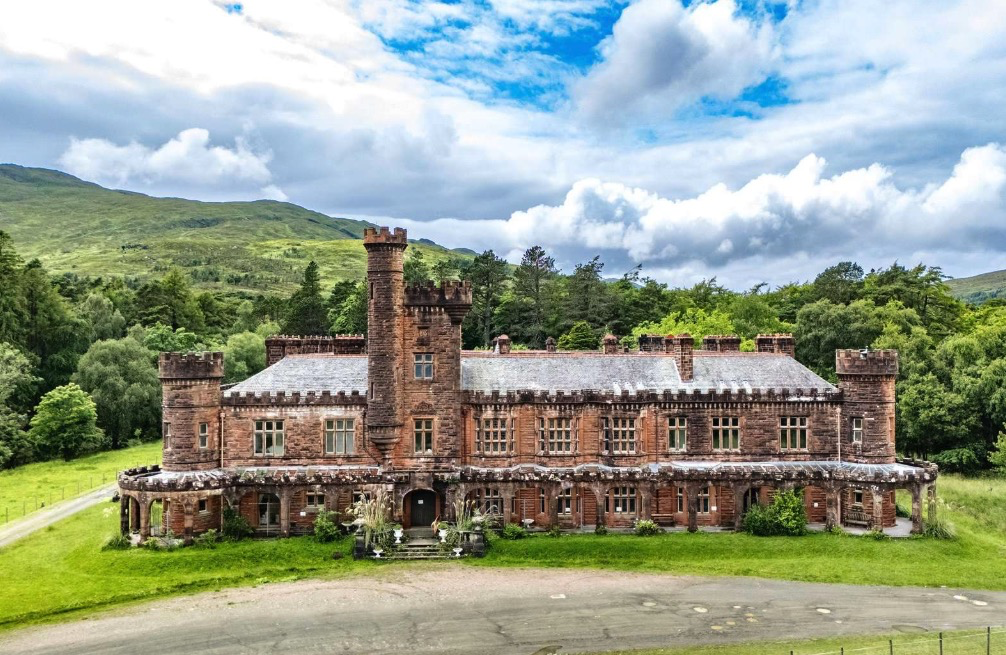
Kinloch Castle pictured in 2025.
What are the reservations? ‘The people of Rum don’t want it to be another millionaire’s playground, rather an asset for the community — they suggest a bistro and bar with accommodation,' explained Mary Miers, author of Highland Retreats and a former Country Life writer, back in 2021. At the same time, Prof Ewan Macdonald, chairman of the Kinloch Castle Friends Association and member of the Isle of Rum Community Trust spoke of his fear that the castle should fall into ‘inappropriate hands’, blaming ‘public-sector ineptitude. To take eight years to decide to sell it is breathtaking... The building has deteriorated’. For eight years you can now read 12.
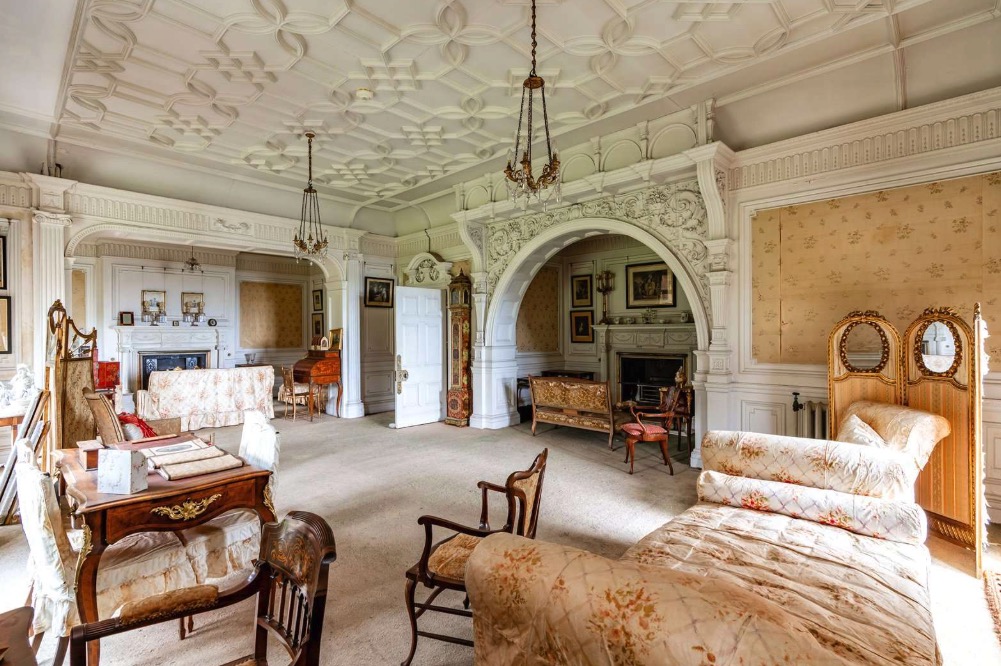
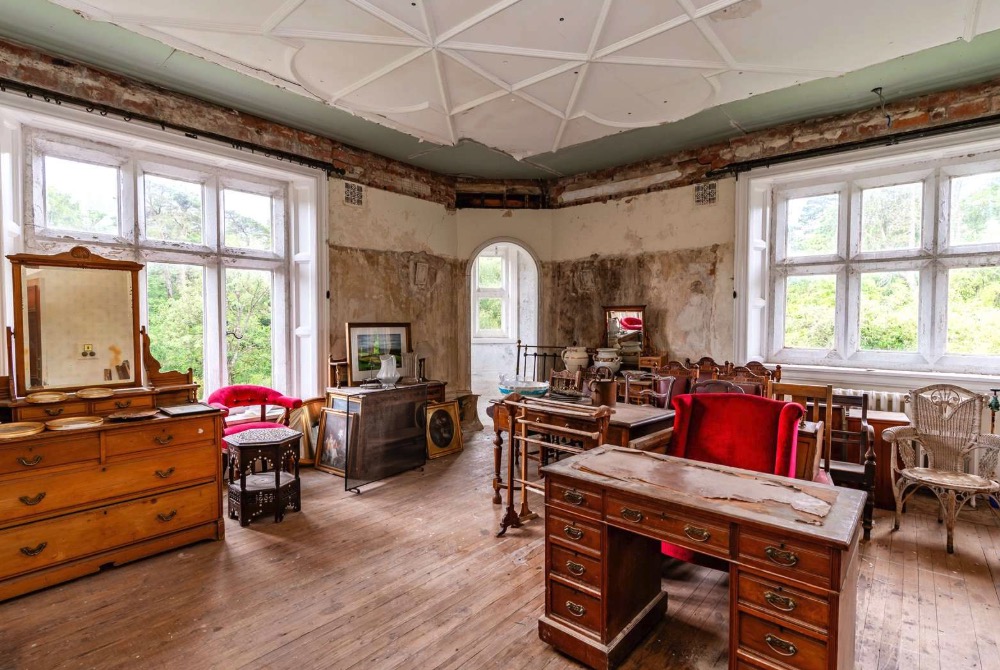
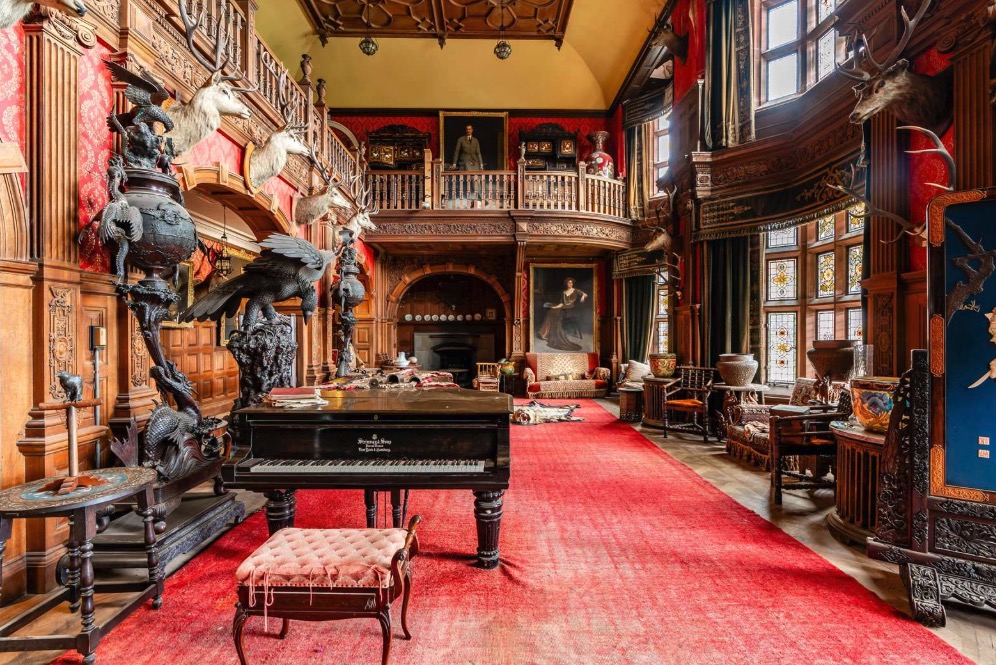
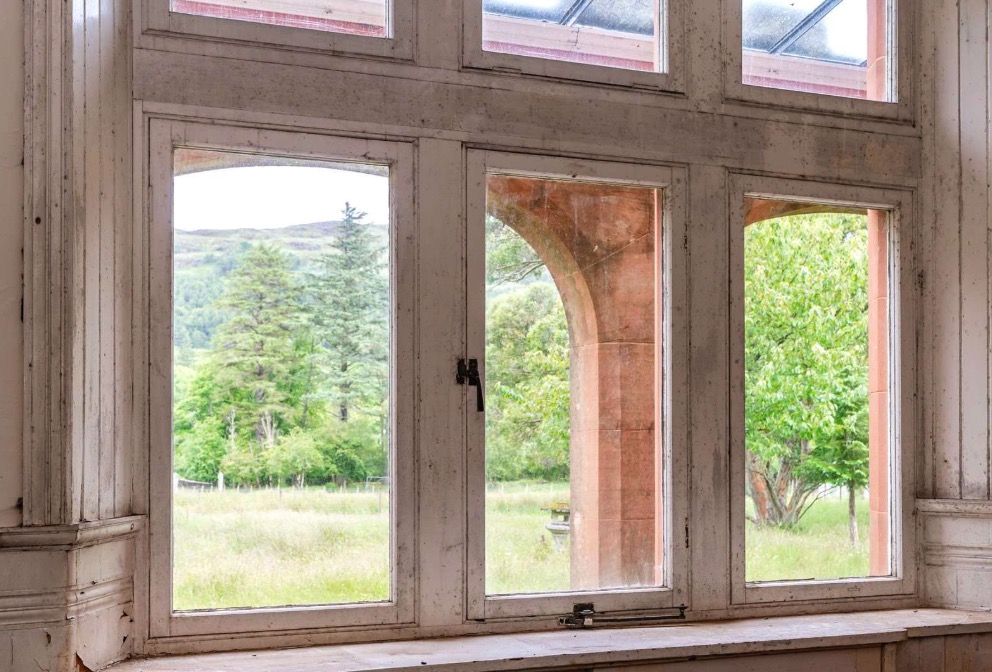
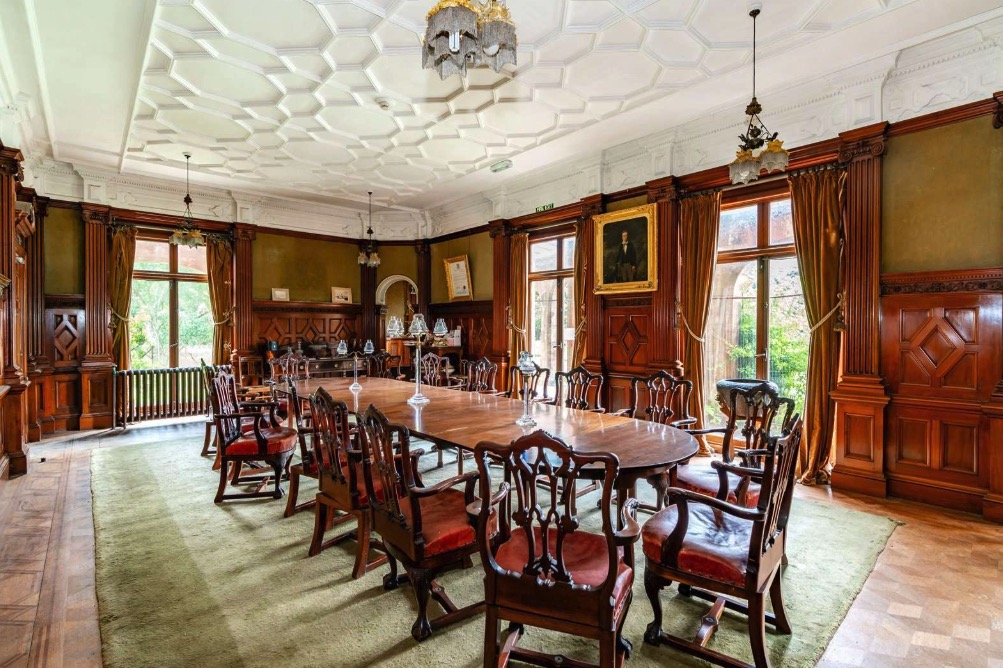
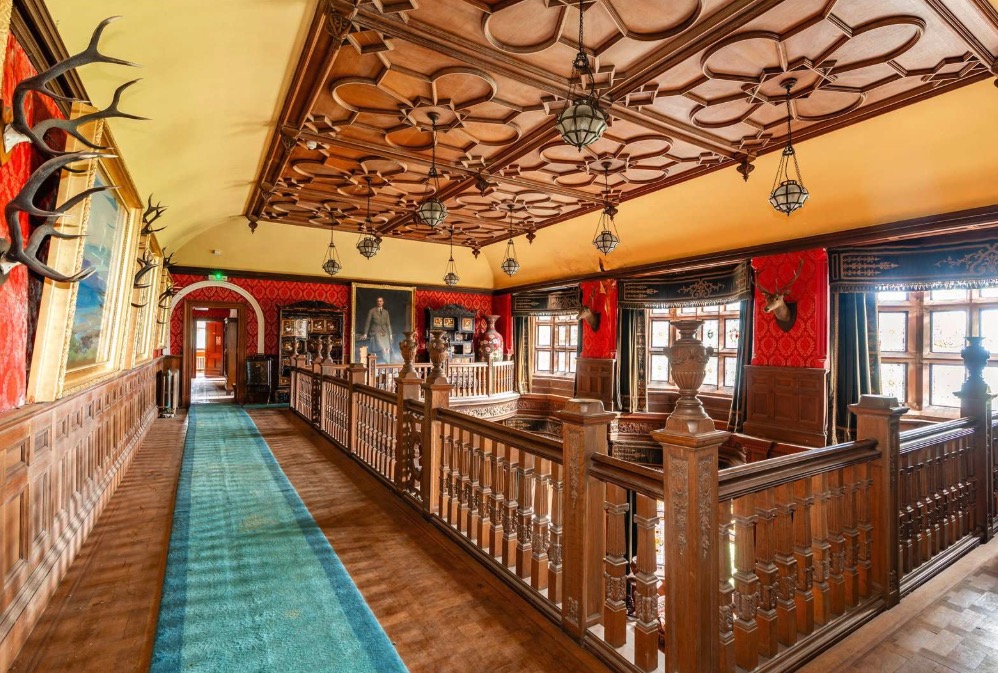
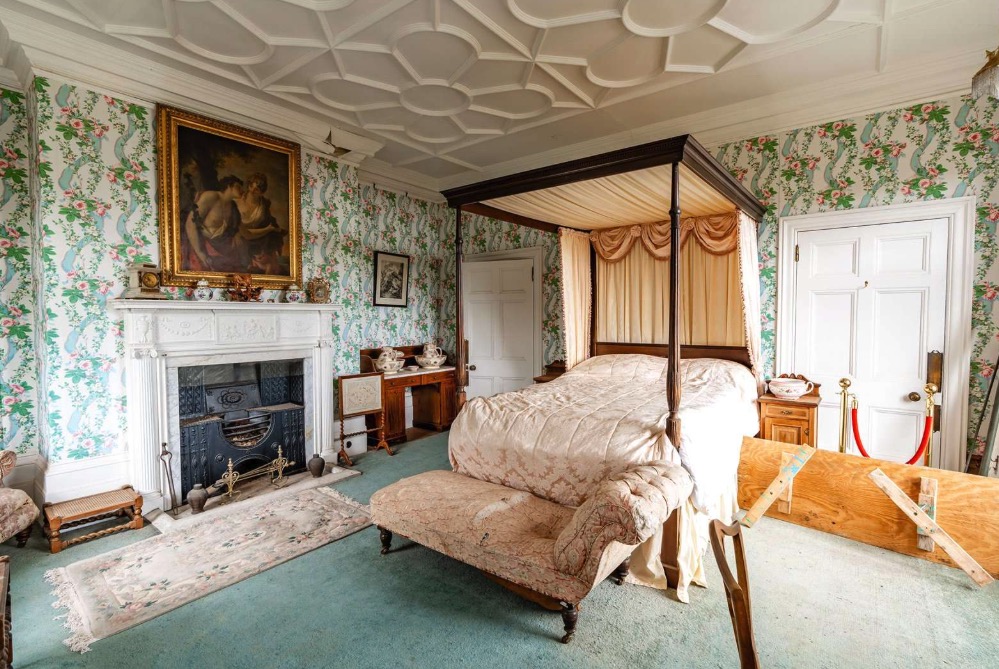
‘The most important thing is the interior,’ added Miss Miers. ‘It’s not all necessarily in great taste, but this is an outstanding ensemble of turn-of-the-century furnishing and technology that has survived against all odds.
'It represents the golden age of that curious phenomenon, the Highland Season, when all of privileged and nouveau-riche society flocked north each summer to be entertained in luxurious palaces in the wilds. Few of these grandiose shooting lodges were more romantically situated than Kinloch, which stands at the head of Loch Scresort, backed by volcanic peaks.’
We're fascinated to see what comes next, but things look clearer and more positive than they have in years — and now, we'd suggest that any prospective buyer would be suitably forewarned about what they're getting in to. 'Through this study, islanders made it clear that the most important aspect of any sale is a long-term commitment to contribute to the community and nature on the island,' Chris Donald of NatureScot told the BBC.
'We are therefore asking prospective buyers to set out, alongside their offer, how they plan to use the castle and grounds and how they will support the nature, sustainability, culture and economy of the Isle of Rum.'
Kinloch Castle is for sale via Savills — see the listing, and read the Scottish government report on the sale.
Toby Keel is Country Life's Digital Director, and has been running the website and social media channels since 2016. A former sports journalist, he writes about property, cars, lifestyle, travel, nature.
-
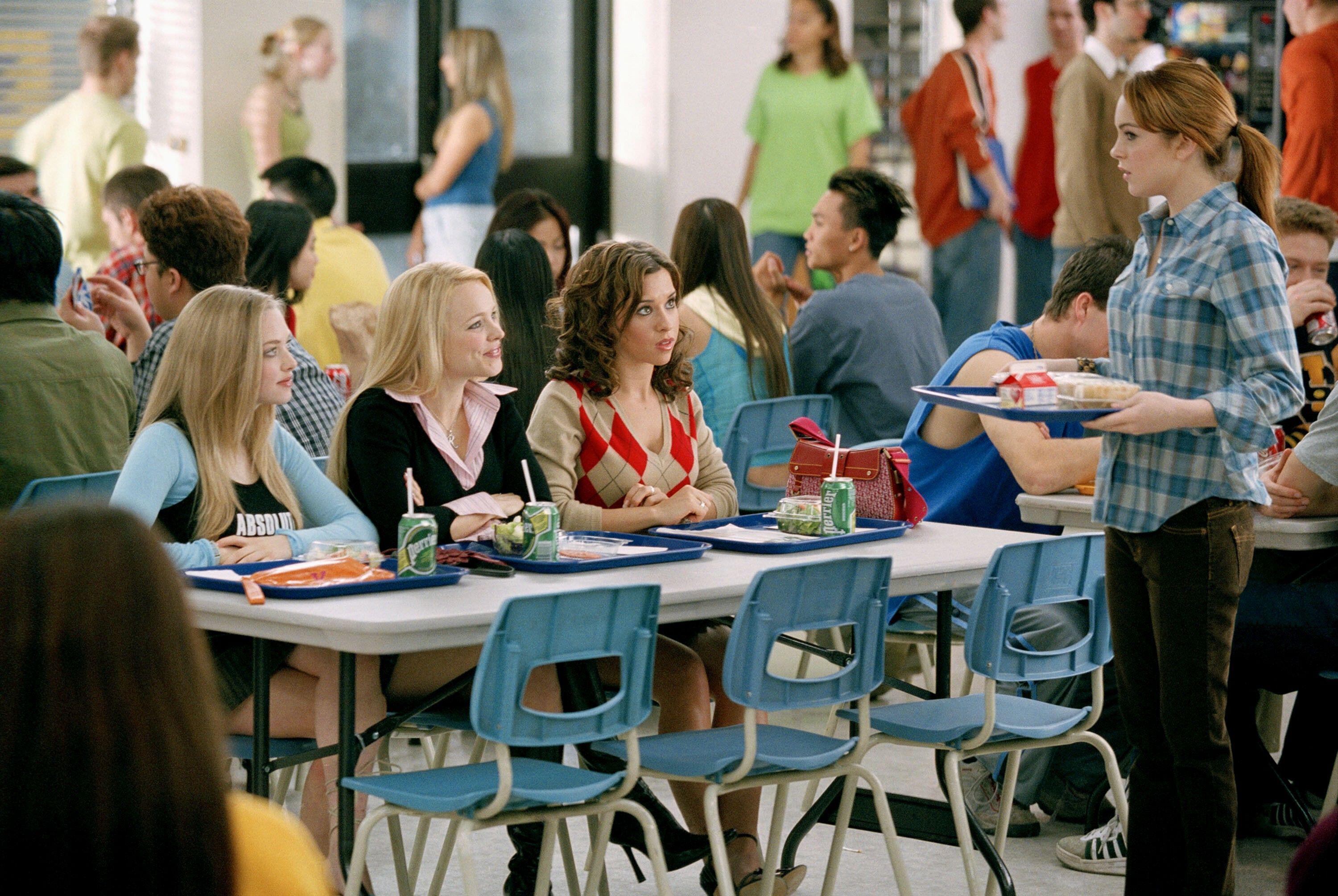 You can't sit with us unless you do the Country Life Quiz of the Day, December 8, 2025
You can't sit with us unless you do the Country Life Quiz of the Day, December 8, 2025Do you remember this film? It's in today's quiz.
By Country Life Published
-
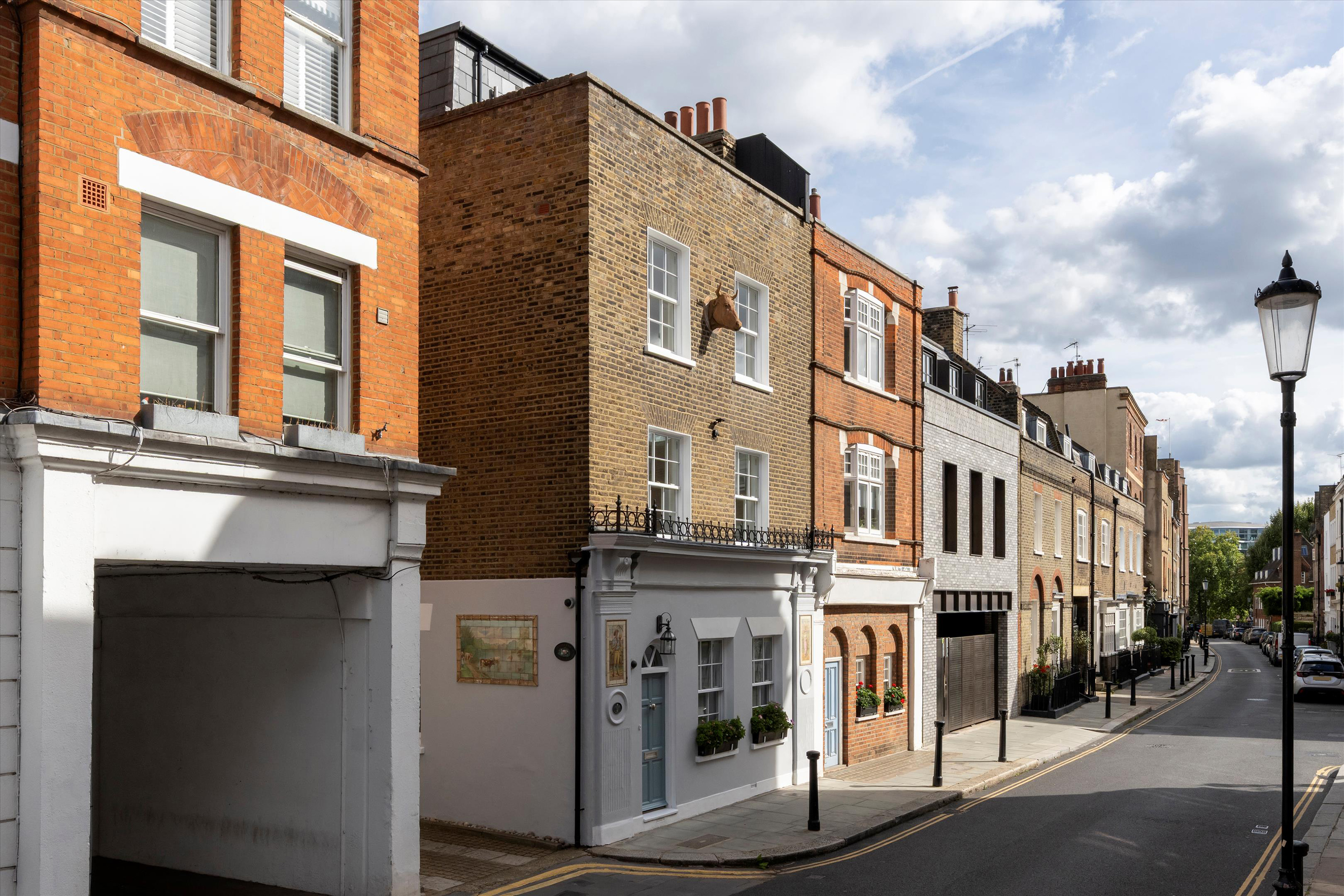 When Chelsea was grazing and pasture, not gazing and posture, this house was a Georgian dairy. Now it's a townhouse on SW3's swishest street
When Chelsea was grazing and pasture, not gazing and posture, this house was a Georgian dairy. Now it's a townhouse on SW3's swishest streetWill Hosie takes a look at The Old Dairy, a beautiful old home in SW3 that's seen the entire area grow up around it.
By Will Hosie Published
-
 When Chelsea was grazing and pasture, not gazing and posture, this house was a Georgian dairy. Now it's a townhouse on SW3's swishest street
When Chelsea was grazing and pasture, not gazing and posture, this house was a Georgian dairy. Now it's a townhouse on SW3's swishest streetWill Hosie takes a look at The Old Dairy, a beautiful old home in SW3 that's seen the entire area grow up around it.
By Will Hosie Published
-
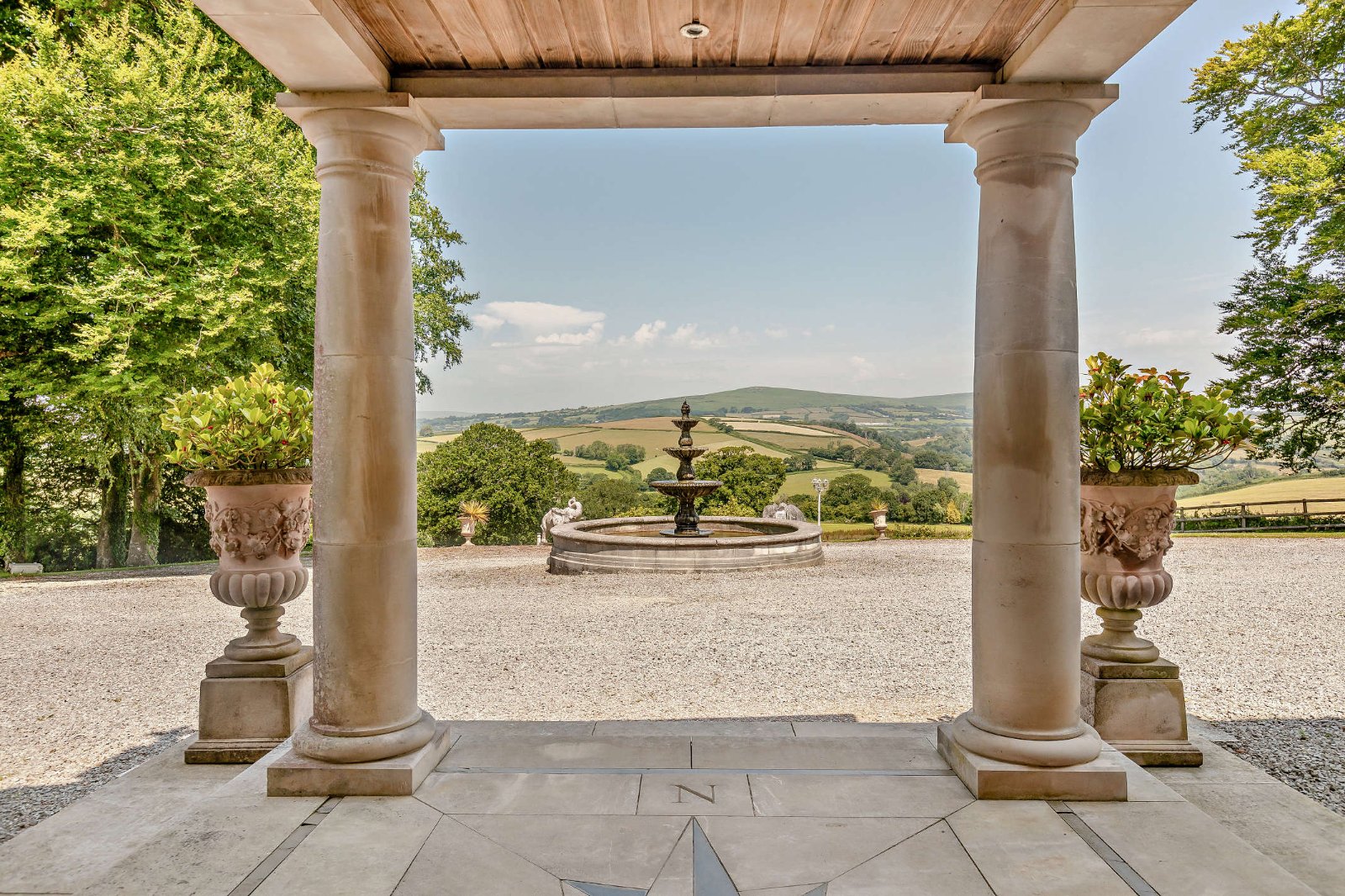 18 country houses across Britain, from £400,000 to £4 million, as seen in Country Life
18 country houses across Britain, from £400,000 to £4 million, as seen in Country LifeOur look at the homes to come to the market via Country Life this week picks out a charming Kent cottage and an Arts and Crafts house in Leicestershire.
By Toby Keel Published
-
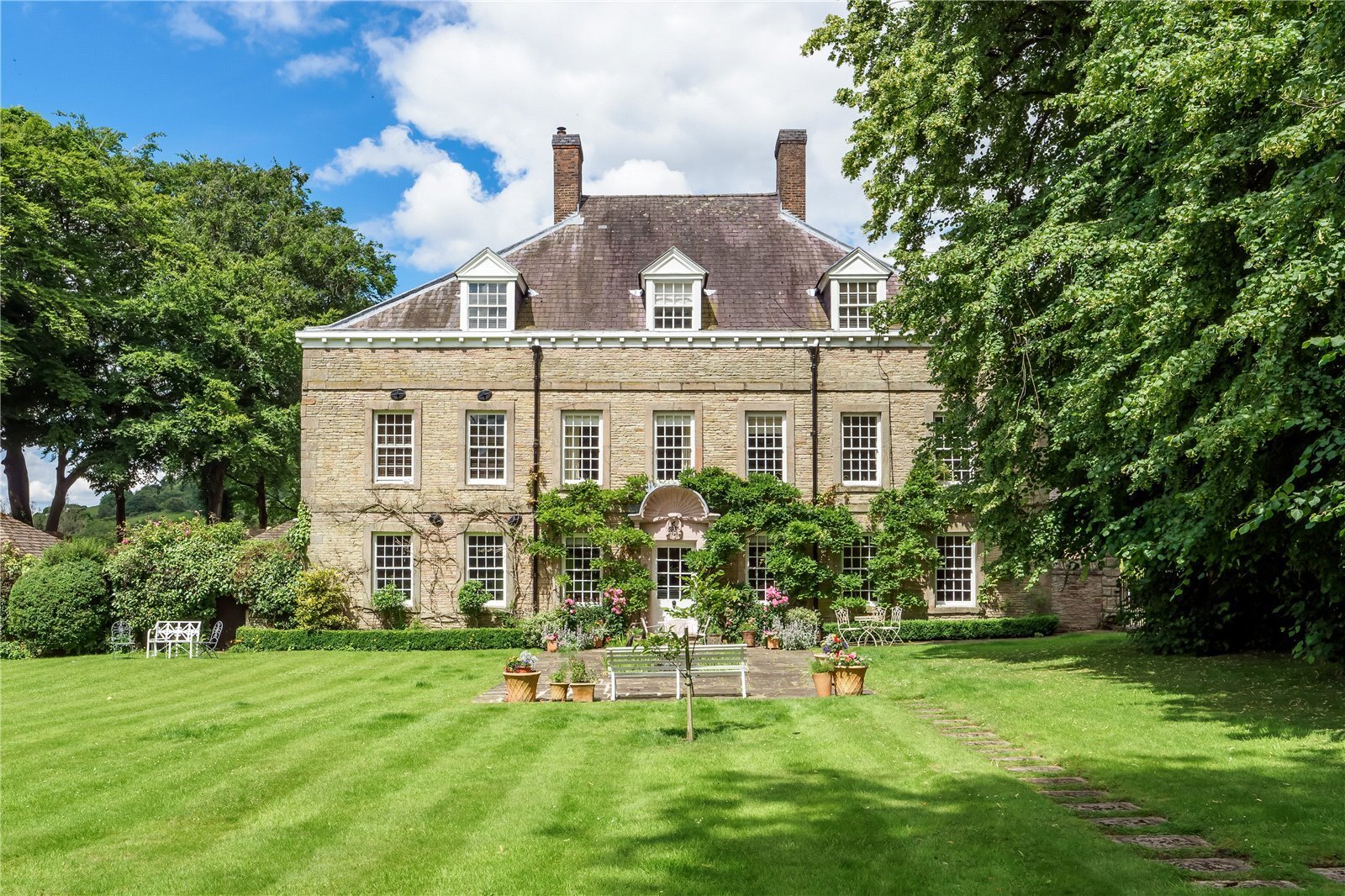 Can you buy happiness? The latest list of Britain's happiest places, and what you could end up with if you moved there
Can you buy happiness? The latest list of Britain's happiest places, and what you could end up with if you moved thereCan you buy happiness? Of course not, but you can buy a nicer house in a better town... and, well, that's probably going to help quite a bit.
By Toby Keel Published
-
 The wave of downsizing about to hit the property market in the UK
The wave of downsizing about to hit the property market in the UKThe Chancellor of the Exchequer's Budget — and specifically the 'Mansion Tax' — has fired a starting pistol for downsizers, and the waves will wash across the entire property market. Annabel Dixon spoke to property experts across the country to gauge how it will play out.
By Annabel Dixon Published
-
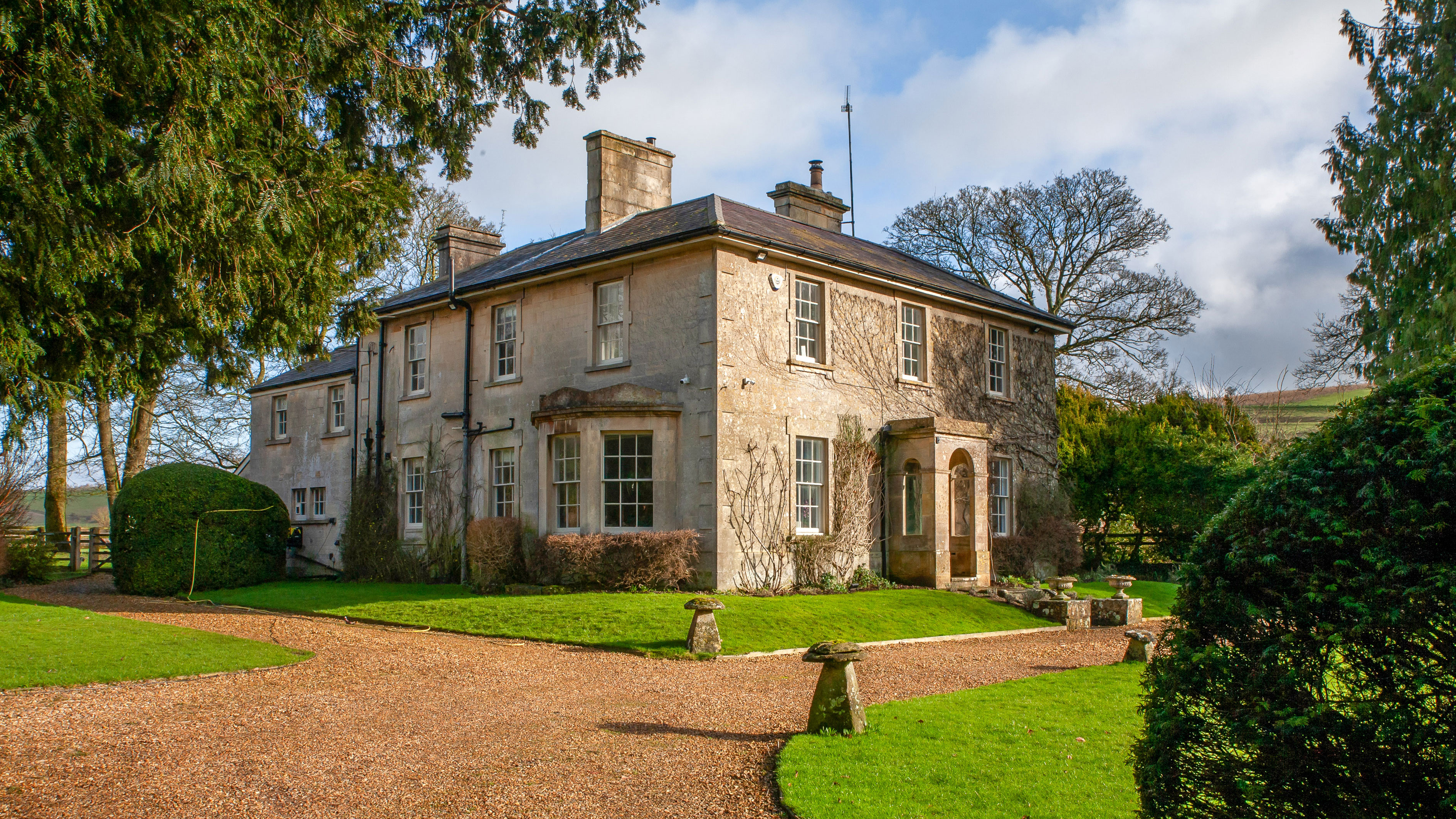 A Georgian farmhouse that's an 'absolute gem' in an ancient village on Salisbury Plain
A Georgian farmhouse that's an 'absolute gem' in an ancient village on Salisbury PlainJulie Harding takes a look at the beautiful West Farm in a gorgeous Wiltshire village.
By Julie Harding Published
-
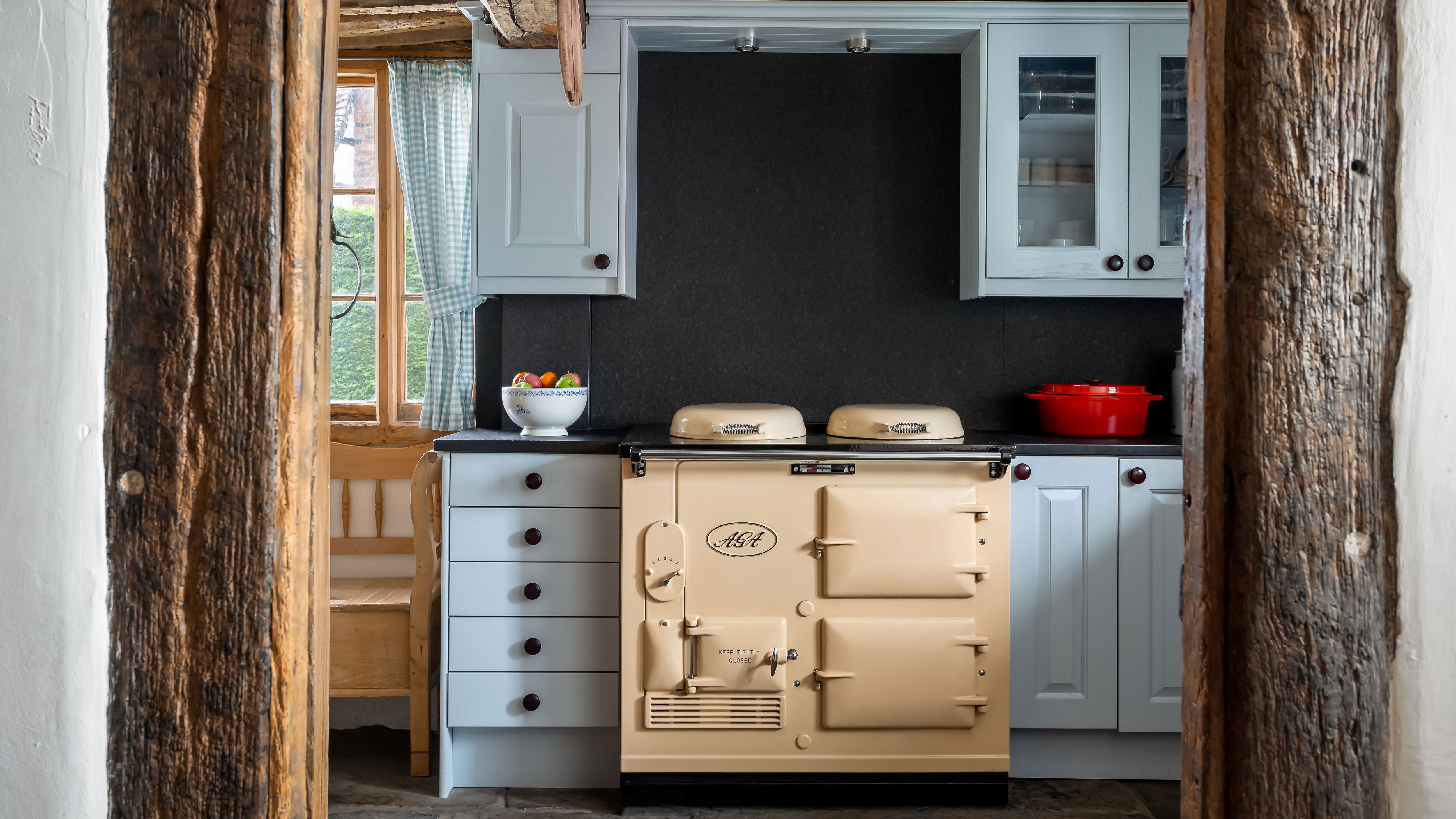 It'd be crazy to buy this 500-year-old farmhouse just because of its utterly gorgeous Aga — so thank goodness that the rest of this place is also really nice
It'd be crazy to buy this 500-year-old farmhouse just because of its utterly gorgeous Aga — so thank goodness that the rest of this place is also really nicePerry Mill Farm is an immaculate yet characterful four-bedroom dream home in the country at a price that will make city dwellers immediately start Googling 'working from Worcestershire'.
By Toby Keel Published
-
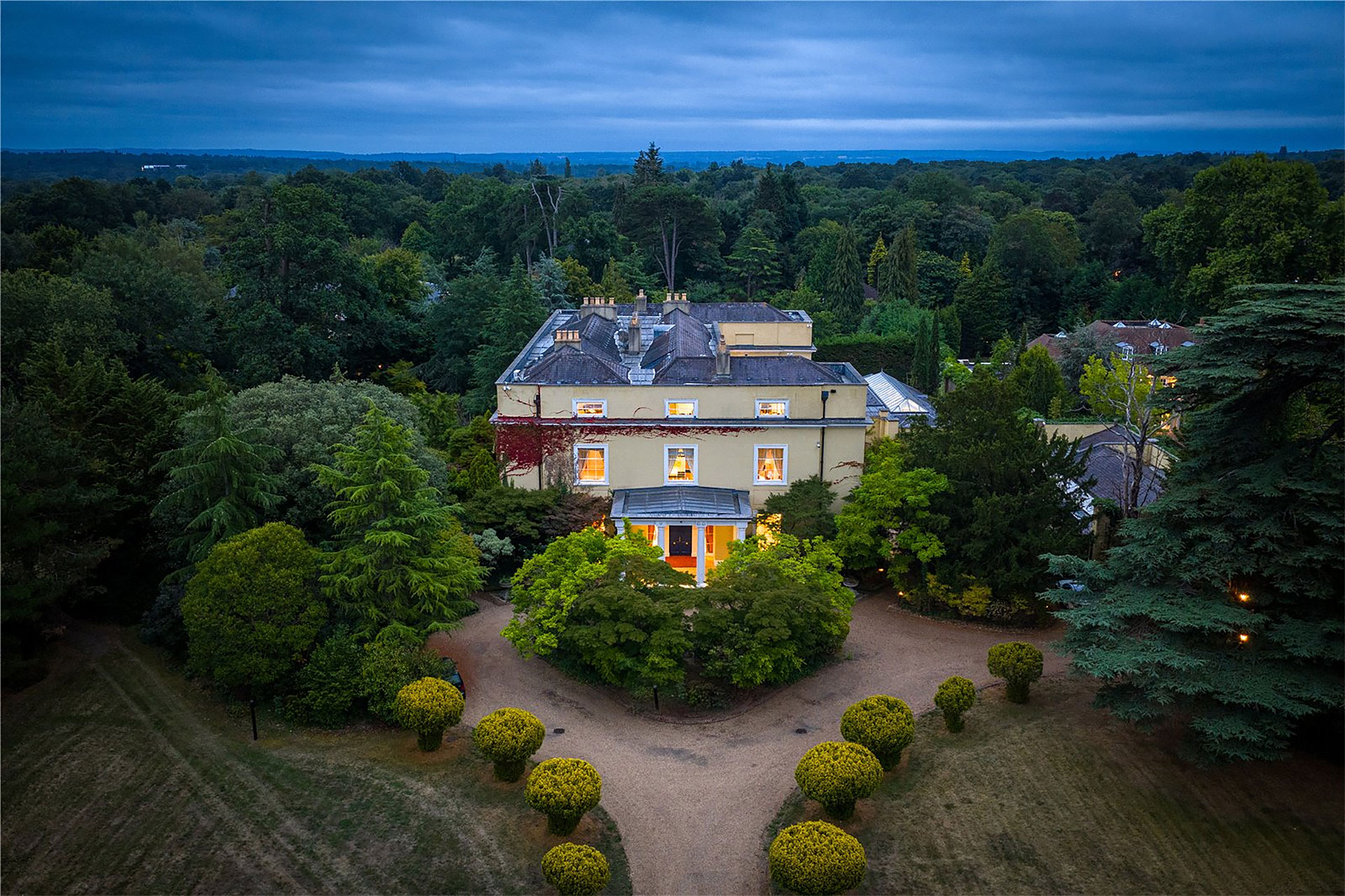 'A masterpiece of timeless elegance' for sale on the charmed Surrey estate once owned by Henry VIII and the Guinness family
'A masterpiece of timeless elegance' for sale on the charmed Surrey estate once owned by Henry VIII and the Guinness familyThe Manor House in Burwood Park is a grand, enormous and undeniably impressive. Annabel Dixon takes a look.
By Annabel Dixon Published
-
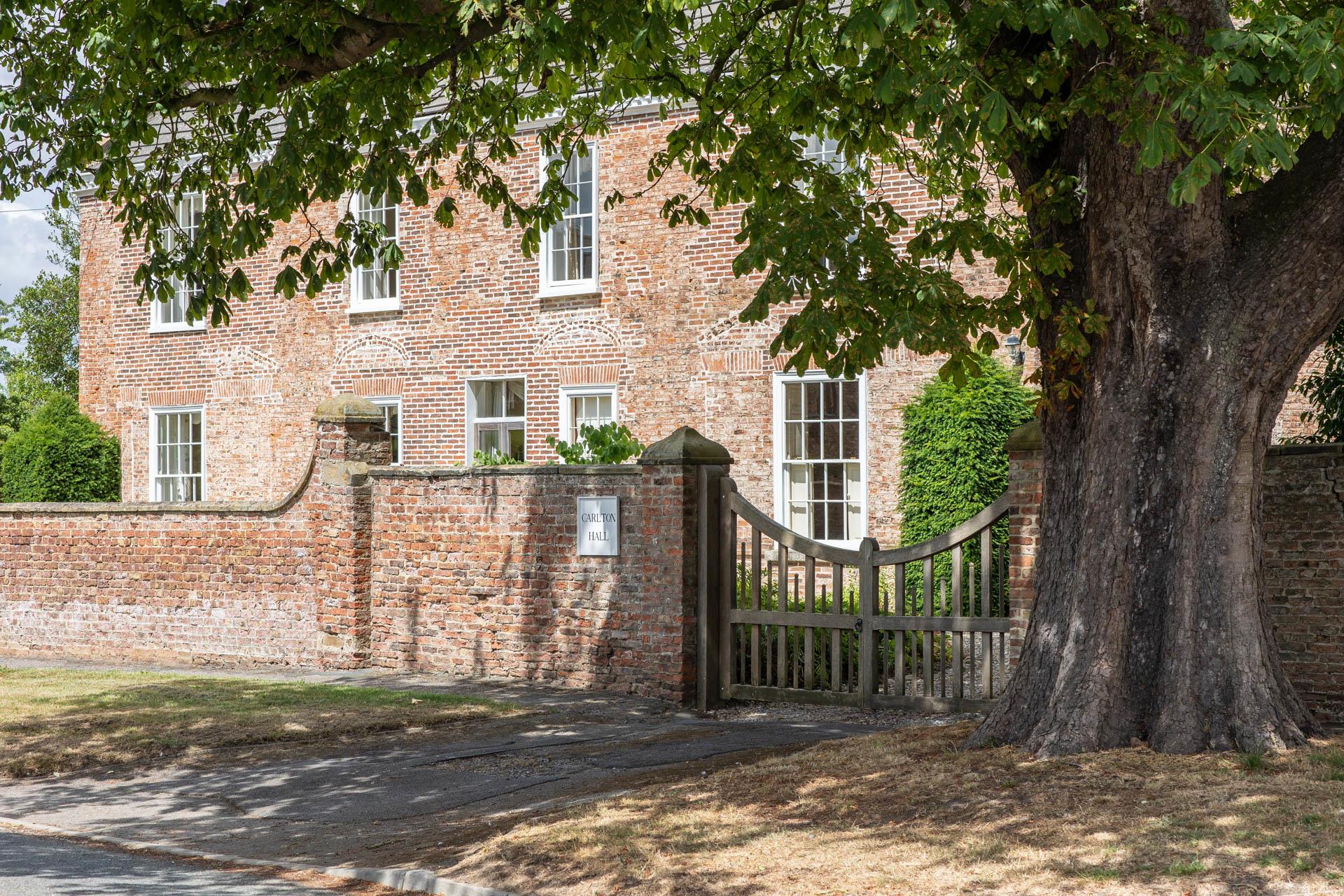 A grand hall in Yorkshire with 400 years of history
A grand hall in Yorkshire with 400 years of historyCarlton Hall is a wonderful family home amid glorious gardens in a quaint village location. Penny Churchill looks inside.
By Penny Churchill Published

